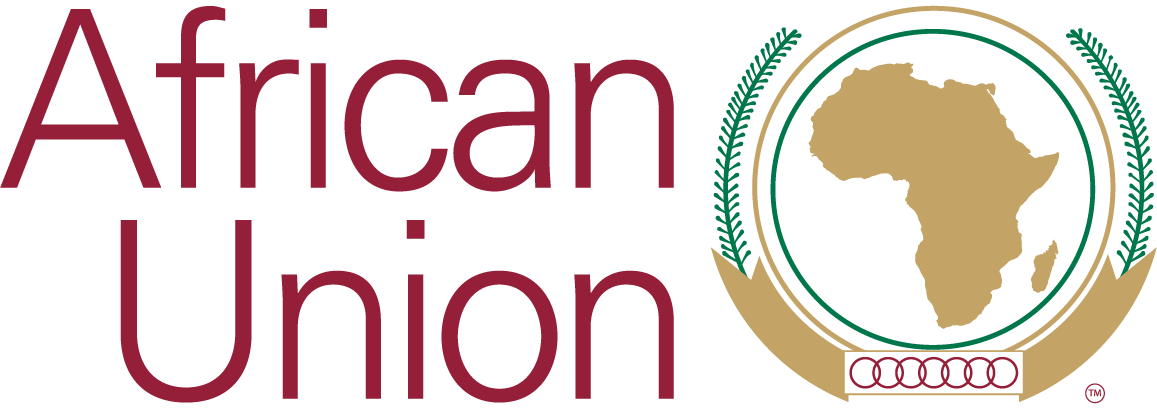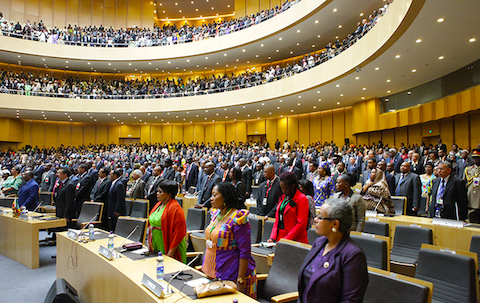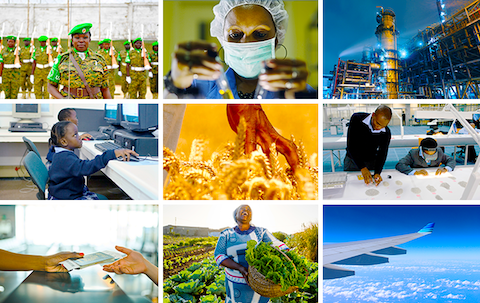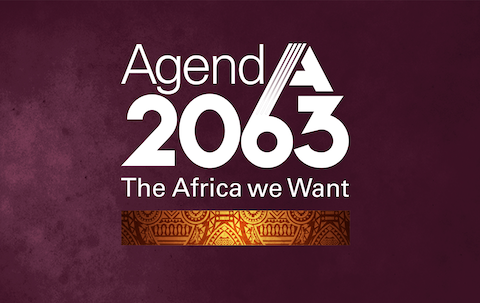statement by H.E. Tumusiime Rhoda Peace, African Union Commissioner, Rural Economy and Agriculture
statement by H.E. Tumusiime Rhoda Peace, African Union Commissioner, Rural Economy and Agriculture
Resilient Landscapes in Africa’s Drylands: Seizing Opportunities and Deepening Commitments
Monday, November 14, 2:00 – 3:30 pm, Africa Pavilion, Room 1
statement by
H.E. Tumusiime Rhoda Peace,
African Union Commissioner, Rural Economy and Agriculture
Excellences, Distinguished Delegates, Ladies and Gentlemen,
It gives me great pleasure to extend to you all a very warm welcome greetings on behalf of the Chairperson of the African Union Commission, H.E. Dr. Nkosazana Dlamin Zuma and on my behalf to this important event on the theme ‘ Resilient Landscapes in Africa’s Dry lands: Seizing Opportunities and Deepening Commitments, here at the margins of the Conference of the Parties of the UN Framework Convention on Climate Change. It is an honour for me to be here today with all of you. As you may know, this is my last COP in the position of AU Commissioner, but certainly not the last COP.
Land degradation has received widespread debate at the global level as evidenced by the literature: UNEP, 1992,
One school believes that it is a serious global threat posing a major challenge to humans in terms of its adverse impact on biomass productivity and environment quality (Pimentel et al., 1995; Dregne and Chou, 1994). Ecologists, soil scientists, and agronomists primarily support this argument. The second school, comprising primarily economists, believes that if land degradation is a severe issue, why market forces have not taken care of it, they argue that land managers (e.g. farmers) have vested interest in their land and will not let it degrade to the point that it is detrimental to their profits (Crosson, 1997). It is time that we pay more attention to the second school of thoughts, looking a trend of events. In as much as the land degradation is a huge challenge especially for the population in the Drylands, the area presence huge investment opportunity. Recent studies undertaken within the framework of the Great Green Wall initiative estimates that the Dry lands of Africa is over 720 Million Ha. Less than 5% of this land have any significant investment, this is 720 m ha with 12 months of sunshine for solar energy, steady winds for energy, and more than 300 million inhabitants. We have to change the way we see the dry lands in general and our perception of the challenges, for these are huge bankable investment, opportunities like rain water capture and storage for irrigation, investment in livestock, renewable energy, carbon sequestration projects etc.
Excellences, Distinguished Delegates, Ladies and Gentlemen,
Before I go on, permit me to express a word of gratitude and hearty congratulations to the People and Government of the Kingdom of Morocco hosting and organizing this major global event and for their hospitality and support. We are very proud of this achievement, they have proven once again that, Africa can do. The Ministers from our member States, who have increasingly been very support and totally engage, always ready to ‘answer the call from the AUC. I also thank the World Bank, UNCCD, NEPAD especially, my Sisters, here, Magda, Monique, Estherine, their team for the collaboration with the AUC team not only in the organization of this event but all the other events in the course of the year including the Great Green Wall Initiative international conference, the 3rd Africa Dry land week, First Africa Drought conference amongst others. Our gratitude goes, to EU, EU DEVCO, FAO, CILSS, IUCN, the Pan African Agency, GIZ, UNEP, UNDP, ICRAF,OSS, SOS SHAEL International, and all the brothers and their team too ( let me accused of being bias), and All who over the course of the year have supported and collaborated with the AUC.
Excellences, Distinguished Guests, and participants,
Drylands are one of the world’s major ecosystems and cover 41 percent of the earth's land surface, spanning nearly 100 countries - mostly in the developing world. One third of the world population or 2.3 billion people who inhabit the drylands live at the margin of sustainability, where moisture is generally a luxury. The region is characterized by relatively low rainfall, with the population depending on livelihood and economic activities that are generally dependent of the caprices of the general climatic conditions, i.e. rainfed agriculture and animal husbandry, pastoral livestock’s. Over the years, these activities are facing serious pressure from both natural and anthropogenic factors leading to serious land degradation leading to degradation. The extensification and intensification of agriculture and pastoralism to increase production are posing serious challenges as the population increases and more mouths are to be fed. The challenges of land degradation in its various forms and its impact on the adjacent populations especially in Africa’s dry lands cannot be overemphasized and not the subject of this event as we are here to talk solutions, commitments, engagements and actions.
However, I have to mention some of the emerging impacts which are very troubling. The consternation of the realization of the increasing NEXUS land degradation- Climate change – migration- conflicts- migration- terrorism- youth vulnerability. We all know the devastation that precarious and clandestine migration is causing on Africa’s youths, according to the IOM, OM reports an estimated 210,643 migrants and refugees entered Europe by sea in 2016 through 12 June, with over 2,859 dead in the first quarter of 2016, nearly all from the Dry lands of Africa. In the Horn of Africa, over 25 million people needed food aid with over 12 million internally displaced person with land degradation and climate change being amongst the main factors amongst others. These seemingly insurmountable challenges as I said presence infinite development potentials, if our young people are ready to cross the deserts and the deep seas for ‘Greener pastures’ just imagine what they can do when we harness and channel these passion to be used to themselves and their family to a more better use. Think a second, the World Bank estimates that it takes USD $ 200-250 to restore a Hectare of land, we have about 720 million of dry land needing attention, do the arithmetic
Excellences, Distinguished Guests, and participants
We all know the Objectives of this event but let me remind you, we are not here to go into analyses or sensitization, we all know the challenges and opportunity that land degradation presents. We are here for countries to Confirm commitment to build resilient landscapes at scale; confirm partners’ commitment to support African countries’ to scale up successful initiatives, call for greater collaboration amongst countries and partners in promoting resilient landscapes under a common umbrella.
Strengthened commitment and suggested course of action by African countries and partners for transformational change on Africa’s landscapes. Especially aligning with National Determined Contributions (NDCs), the AGENDA 2063 and Sustainable Development Goals (SDGs) with a clear road map.
Excellencies, Distinguished Guests, and participants,
A Heads of State Summit on the Great Green Wall initiative and Lake Chad was hosted by the President of the French Republic, H.E. Francois Hollande and attended by over 12 head of states from Africa and head of major Department Partners during the last COP in Paris. The result of this was a commitment to work together to support Africa in its combat against land degradation through its Flagship programmes especially the Great Green Wall and Lake Chad’ infact over 4 Billion USD were pledged. We are here today to ask for that money. There is a saying that ‘Promise is debt’.
The Africa Union Commission is here to remind us of these commitments, to seek your support and request that we come together, and work together, we have enough information, there are enough initiatives created, it is time for our friends , development Partners, member states of the AUC to come together to.
Emphasize their commitment for supporting resilient landscapes and sustainable natural resource management efforts;
I Call on the World Bank and other development organizations to mobilize financial resources, including from the Green Climate Fund, to help scale up resilient landscape and restoration efforts for transformative impact;
* call on Our traditional development partners FAO, WRI, the World Bank UNCCD, in collaboration with AUC and AU NEPAD and others to help African countries use scientific and economic tools to identify opportunities for cost effective land restoration and sustainable management;
- Call for coordinating continental initiatives under a common umbrella using existing platforms such as the Great Green Wall initiative, the TerrAfrica. Platform
- Request all to work together as was agreed during the First International conference of the Great Green Wall Initiative and the TerrAfrica Steering on to agree on next steps.
- The Africa Union Commission will work to see that all its related mechanisms, like the Specialized Technical Committee, and its subcommittee like AMCEN, AMCOW RECs to give their endorsement to all initiatives like ARLI providing them the necessary mandate to intervene in member states.
In the course of the year many forums have been organised and amongst all of them there is a common perspective in combating land degradation, i.e. the need for a common vision, stronger partnership, close collaboration and synergies in the development and implementation in support of the Member states, these were echoed in the first Great Green Wall initiative international conference, the AFR 100, and TerrAfrica Executive Committee meeting to name just these.
Excellences, Distinguished Guests, and participants,
Despite their challenges, land degradation, desertification climate change represents opportunities for reshaping our thinking on the kind growth and progress we want to see in our world and the role that agriculture can play in this regard through inclusive processes, sustainable investments, and smarter management of our resources. But in order to do this, we can no longer ignore or overlook dryland communities as they hold a central role in the process. By investing in drylands, we invest in food security, the end of hunger, political stability, and opportunities for all. A better future for dry lands means growth—in crops, education, opportunities, and in our futures. Let all the impact investors, the Entrepreneurs, businessmen and institutions, farmers, pastoralists joint hand with AUC and Partners, lets change, for the world is changing, we have seen even in ELECTIONS. Business as Usual is over, it is Business UNUSUAL now.
The kingdom of Morocco is showing us that it is possible with its NOOR II & II solar energy in Ouarzazate, upon completion this will be the biggest of its kind and it is in Africa. We can do it, for the Markets are there, the policy makers are ready to support, Investors are ready with innovative packages, let’s work.
The Africa Union stands with you and will continue to provide its support.
I thank you
Topic Resources
Agenda 2063 is Africa’s development blueprint to achieve inclusive and sustainable socio-economic development over a 50-year period.
Transforming Migration Governance in Africa
We, Heads of State and Government of Member States of the African Union, guided by the principles of Agenda 2063 and sustainable developm









